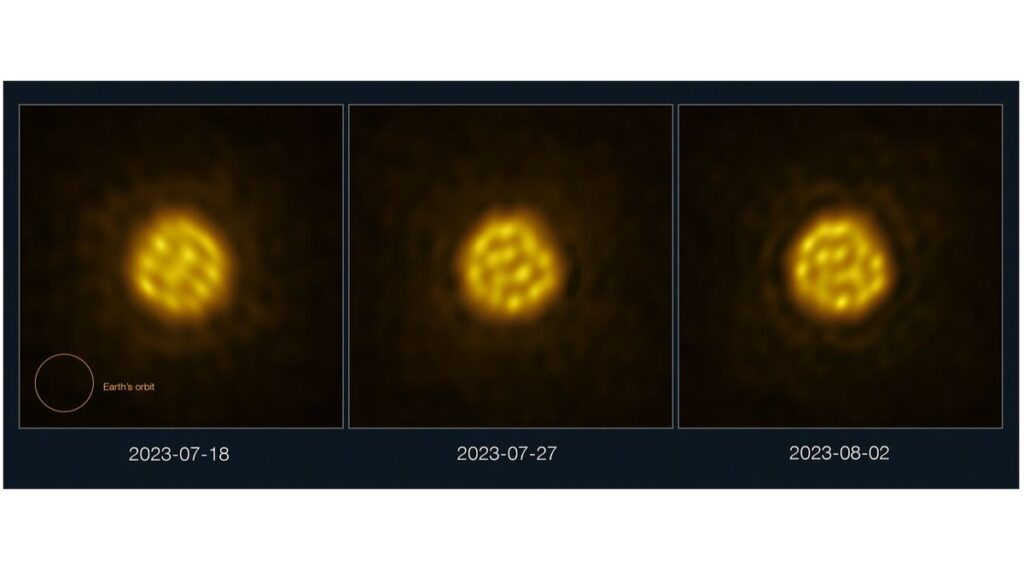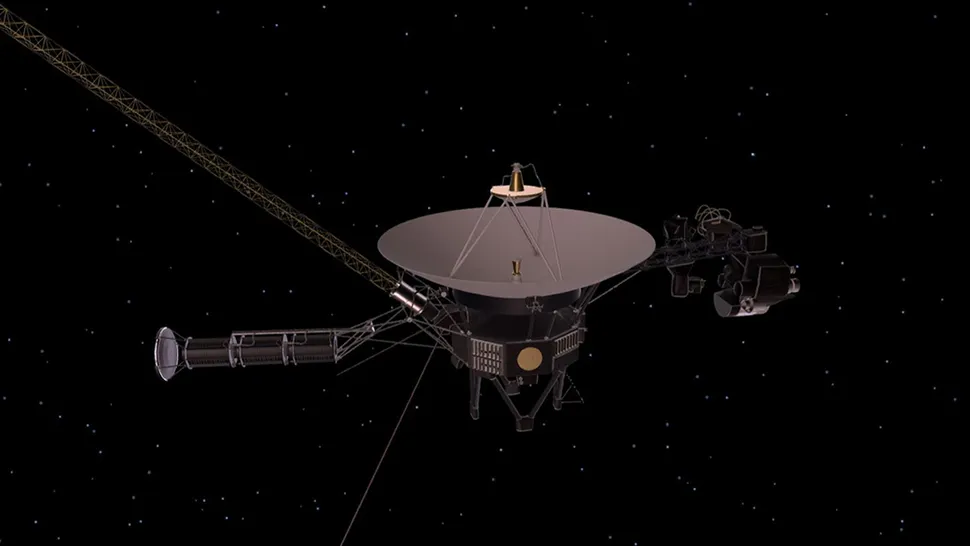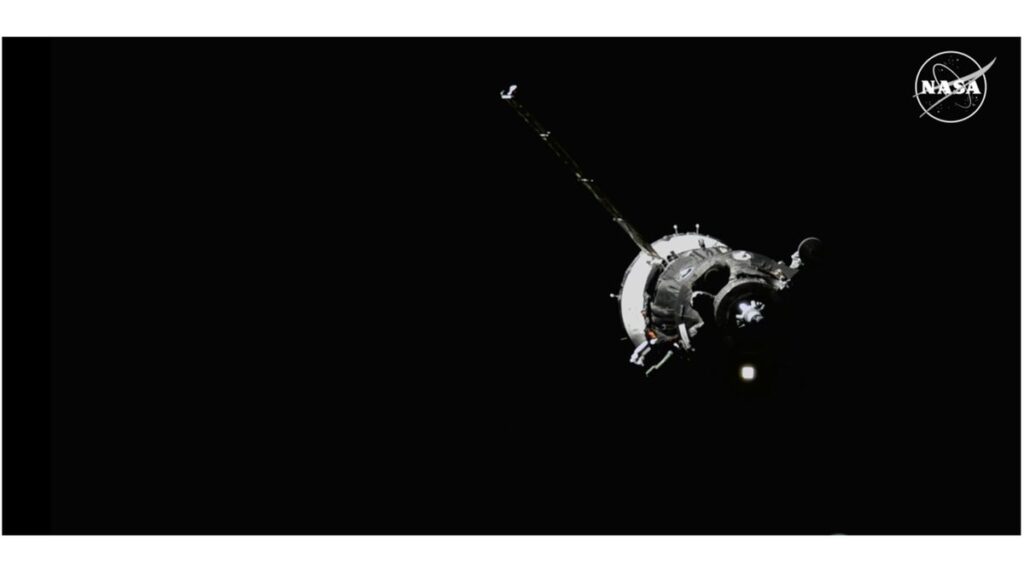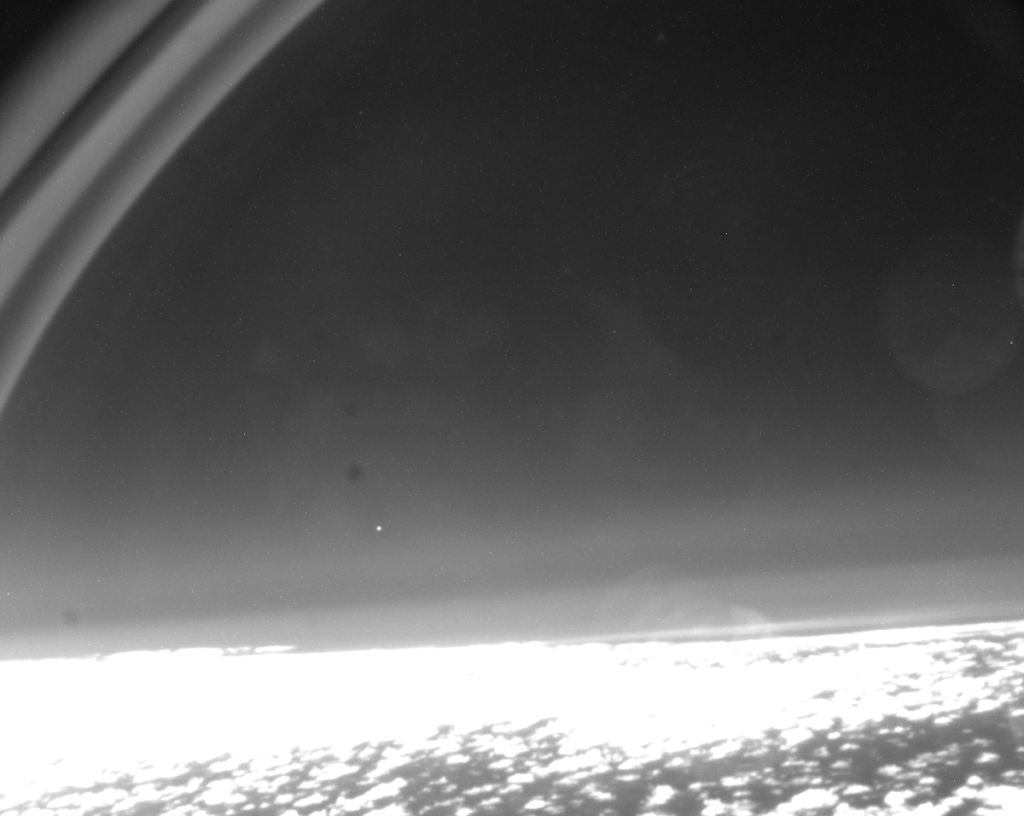Ghana Space News
Saturday, Sept. 14 marks NASA’s annual Observe the Moon Night, a worldwide event to promote lunar science and astronomy, celebrate cultural connections to the moon, and promote amateur lunar observations. On the day, NASA will be hosting a broadcast channel (all live streams available here), along...
Astronomers have gotten the first-ever detailed views of turbulent activity in a star other than our own sun. A time-lapse video released Wednesday (Sept. 11) shows enormous gas bubbles roiling on a nearby star called R Doradus, a red giant about 300 times bigger than our sun that lies roughly 180...
AST SpaceMobile’s first five commercial satellites have reached orbit. The huge spacecraft, called BlueBirds, lifted off today (Sept. 12) at 4:52 a.m. EDT (0852 GMT) atop a SpaceX Falcon 9 rocket from Cape Canaveral Space Force Station in Florida. The Falcon 9’s first stage returned to...
The distant and cold Voyager 1 spacecraft did a clever thruster trick to help it phone home. Voyager 1, the most distant human object that is now flying through interstellar space, had thruster issues making it difficult for the spacecraft to stay pointed at Earth when calling home. Unless Voyager 1...
A NASA astronaut and two Russian cosmonauts arrived at the International Space Station (ISS) this afternoon after a brief orbital chase. A Russian Soyuz spacecraft carrying NASA’s Don Pettit and Alexey Ovchinin and Ivan Vagner of the Russian space agency Roscosmos docked with the ISS today at...
The European Space Agency’s (ESA) Salsa satellite safely deorbited on Sunday (Sept. 8) over a hand-picked region of the South Pacific Ocean, in a carefully guided reentry that agency officials have applauded as the world’s first. Salsa was one of a quartet of identical satellites called...
A NASA astronaut and two Russian cosmonauts launched toward the International Space Station today (Sept. 11). NASA astronaut Don Pettit joined Roscosmos cosmonauts Alexey Ovchinin and Ivan Vagner on the Russian Soyuz spacecraft, which lifted off atop a Soyuz rocket from Baikonur Cosmodrome in...
Polaris Dawn may be a private mission, but it’s conducting research that will benefit NASA. Polaris Dawn lifted off early Tuesday morning (Sept. 10) atop a SpaceX Falcon 9 rocket, sending four people to orbit for a roughly five-day stay aboard the Crew Dragon capsule “Resilience.”...
The Africa Mobile Networks Group (AMN) has announced its successful integration of the Starlink satellite network to provide internet connectivity to over 100 of its rural base stations in Nigeria. Furthermore, the satellite backhaul from Starlink LEO satellites has resulted in a 45% increase in...









